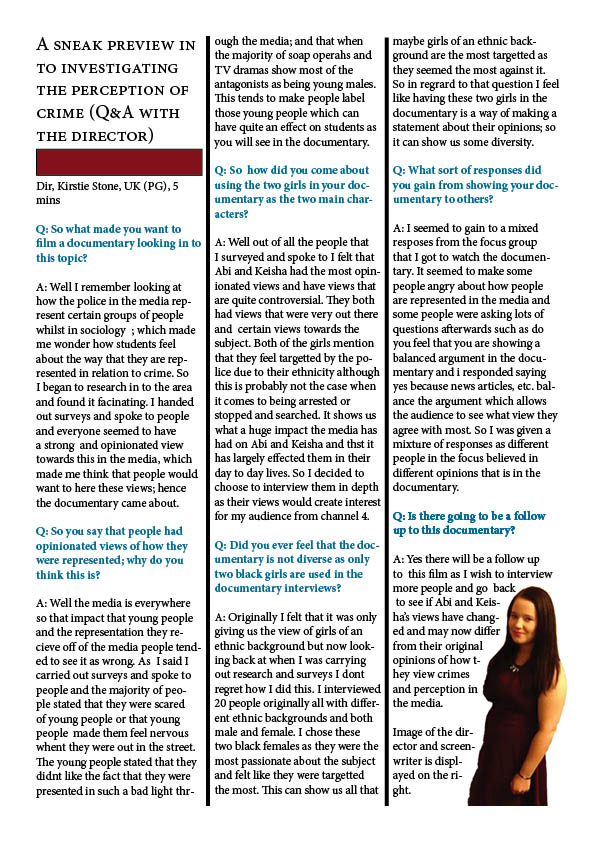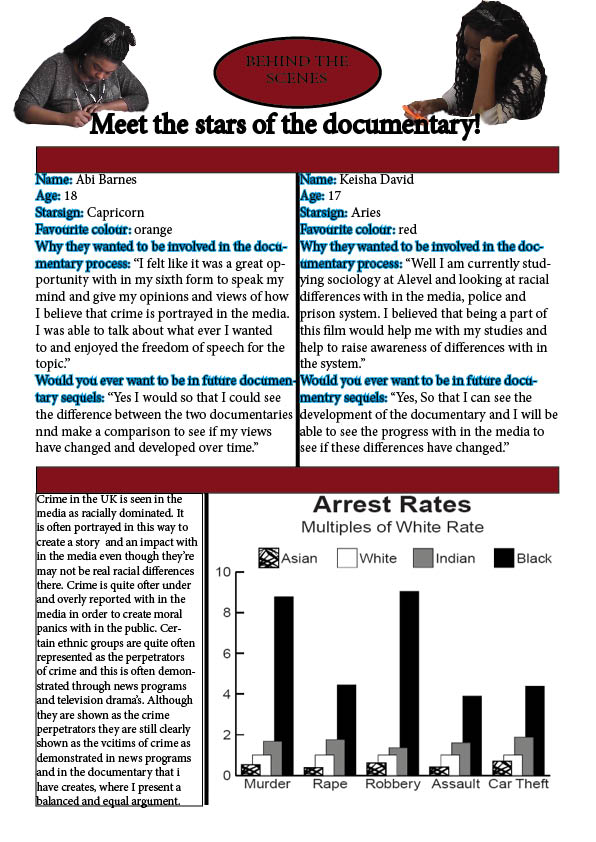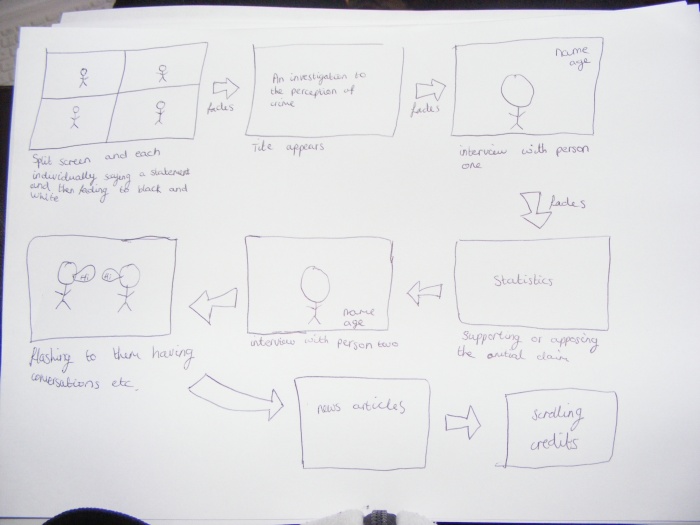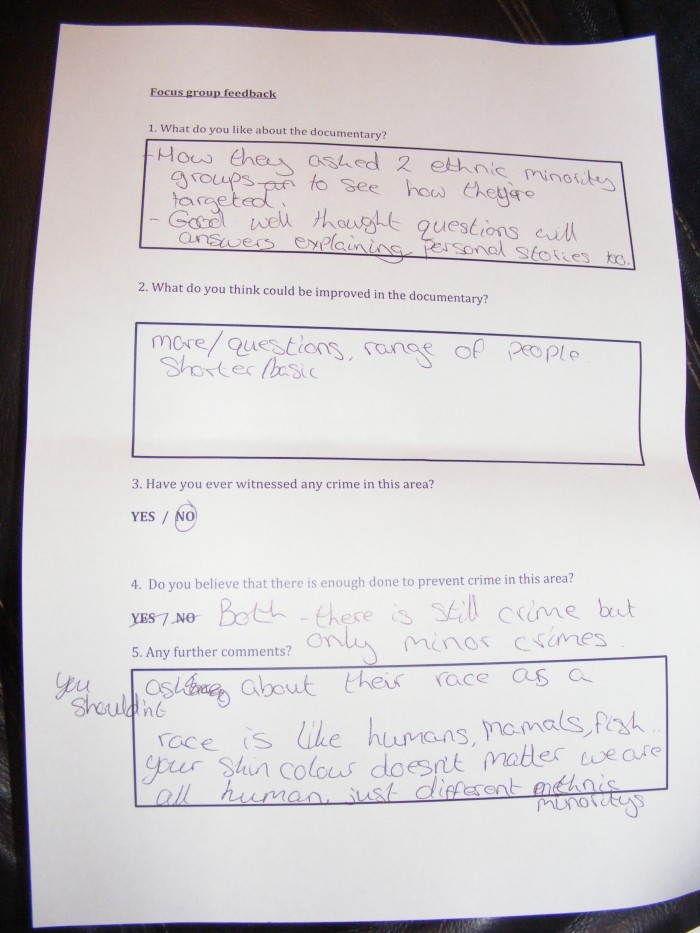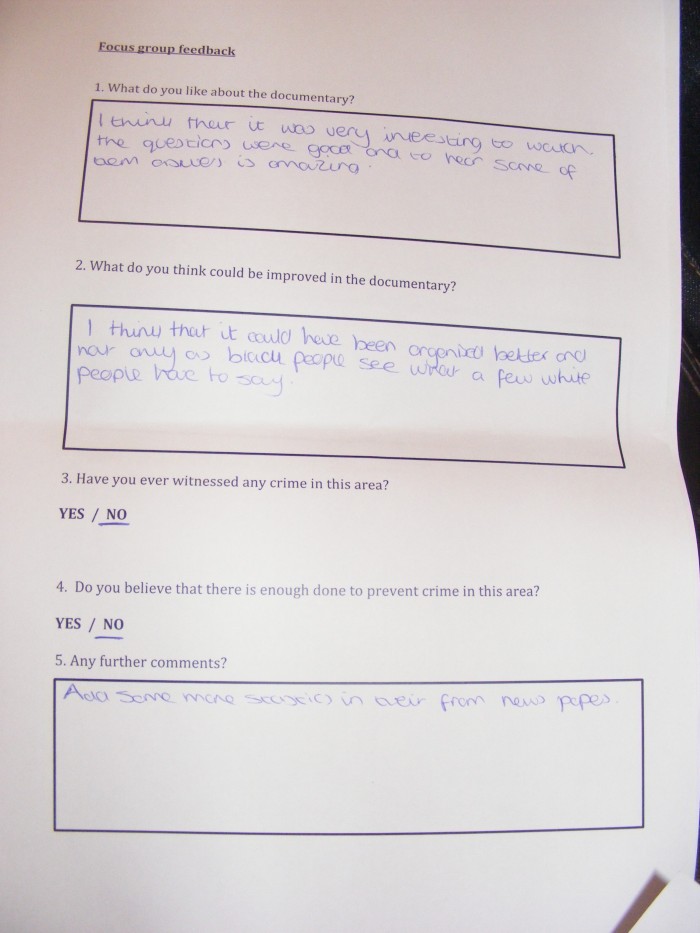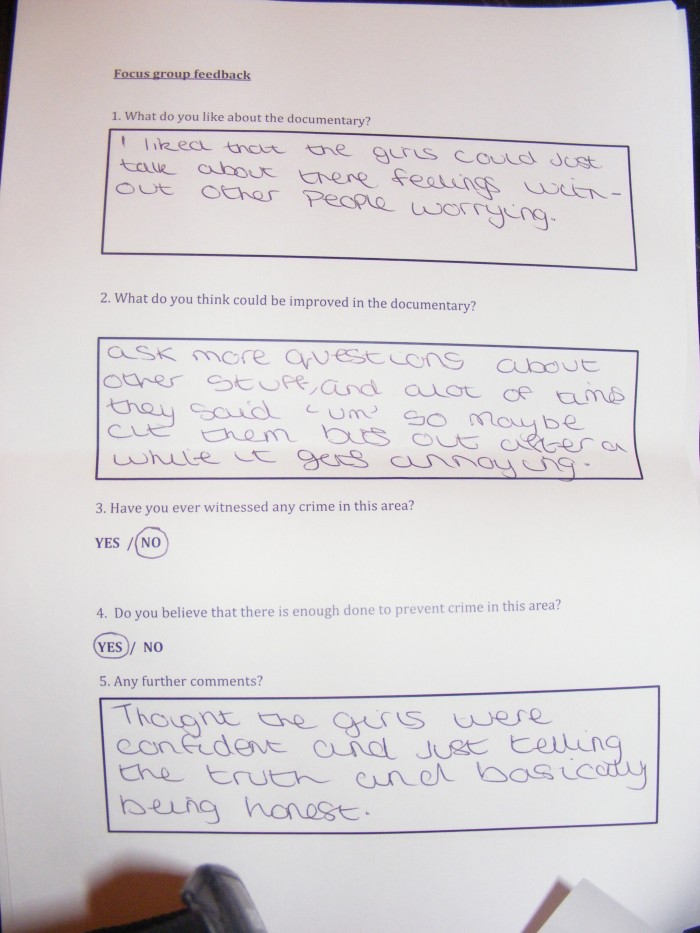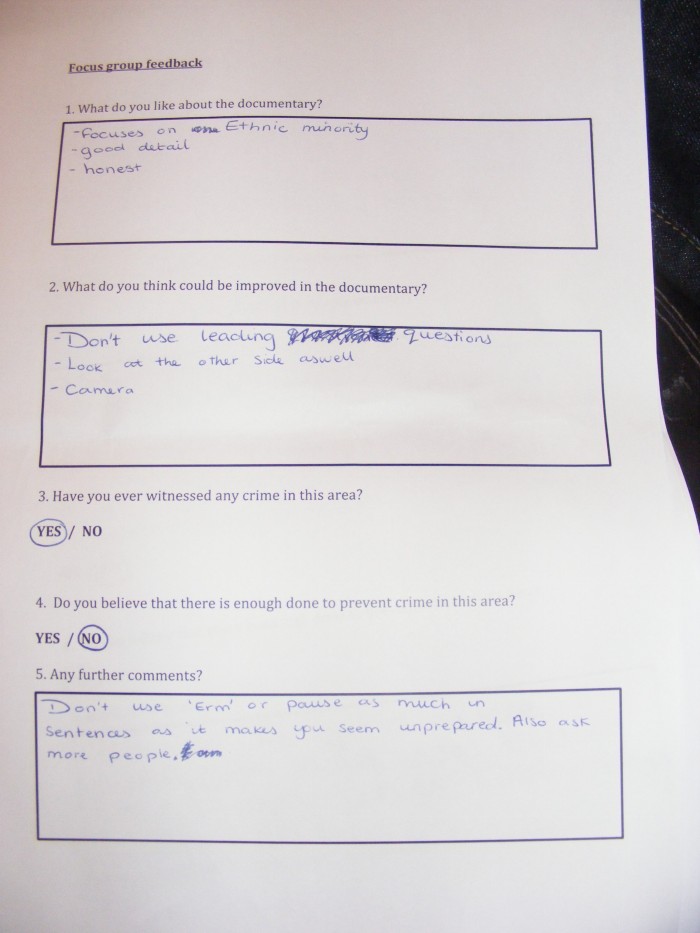Funding, production and exhibition
To fund the costs of my documentary I would go to the British Film institution who are well known for funding documentaries similar to the one that I am creating. The Film Fund is committed to supporting documentary film makers and documentaries with huge potential when they are pitched to them. To finally gain my funding I would have to be accepted to the short list of applicants and be invited to a film festival if I was to be successful with my pitch. When applying for funding there are certain guide lines that must fit to me or my documentary. I would be eligible for funding as I am a first time director, the film is set in the UK, the main characters are British and there is a significant representation of British cultural diversity. I meet these 4 deadlines which allows me to be able to apply for funding.
I would have to apply for this funding online stating:
What is the film about (synopsis, story, themes)?
- The clarity of your story and ideas is key.
What stage is it at?
- What direction will your film take?
What is the track record and previous work of the writer/director?
- Why do you want to make (write/direct) this film? Ideally, these comments
would be written by the screenwriter or director.
What audience are you aiming to appeal to?
- How would you go about achieving your ideas and interpretation on film?
Have you any casting ideas at this stage and how are you planning to approach that cast?
- Where and when are you hoping to shoot the film?
Être et Avoir: The observational mode
Être et Avoir (to be and to have) was directed by Nicolas Philibert in 2001. The observational mode shows us very little interference between the film maker and the characters in the documentary. In this mode the film maker simply observes his subjects whilst he is filming them with out or very little involvement from him. In this film we are shown the teacher teaching his young class as if the camera isn’t even there. This gives us the impression that a camera is set up in the corner and that the film maker isn’t even there. It shows us very few voice overs and no interviews to keep the documentary as real as possible. Nothing is staged and the film maker tends to be able to film things as they happen rather than the film maker attempting to steer the conversation and behaviour in to a certain direction.
Techniques that are used by the film maker is that they are able to capture real life events happening at that moment and have no idea what is about to happen next. This can give an element of surprise to the film maker and to the audience as he is there on the action and is able to catch the new developing event as it is happening. The sound in this type of documentary mode tends to not be edited; which can give the documentary raw sound, so it gives it a more realistic approach towards the characters in the documentary.
When editing this type of documentary the film maker tends to try and do as little editing as possible so that the film can flow as realistically as possible. So there are as little cuts as possible to keep reality whole. Although very little editing is done the film maker edits it in a way so that the documentary can tell a story of either the teachers life and also the students lives whilst they are in an educational environment. These stories need to be created from the information that the film maker is given so that the audience stay entertained and drawn in to the documentary other wise the audience may result in boredom and the viewing figures will be lower than what we originally thought.
In this film we are able to see through out the term how the children evolve (such as one of the children struggles to read and towards the end we are able to see them read a little bit with his self accomplishments) and we are also able to see how the teachers teaching techniques have developed over the term (for example we are shown little word to picture matching pairs game to develop the learning of his students which allows us to see that children learn differently so he adapted his teaching style to suit the child).
Issues and debates in my documentary
One issue that I would face in my documentary is gaining location permission when filming my documentary. As my sixth form is within a school I need to gain these permissions to be able to film in a school that has children that are under the age of 18 in it. Getting permissions such as these signed allows me to put across my documentary pitch so that I am able to make sure that all of my documentary is politically correct and that it is appropriate according to the schools ethics.
Another issue I faced is participant release forms. I needed to use these to gain permission from every one who featured or took part in my documentary. This allows me to use any footage I have taken of that person in any way that I wish for my documentary. This saves any complications for the use of the documentary and so that the participants can understand as to who will see the documentary and where and when it will be featured.
To eliminate copyright issues when statistics or articles are used in my documentary I will reference them from where I found the information; so that the viewers know where the information is from and that they can look into it further if they wish to.
BARB TV viewing figures for November 2014: Channel 4
viewers per thousand:
1) GOGGLEBOX (Fri 07 Nov 2014) 3,917
2) GOGGLEBOX (Fri 14 Nov 2014) 3,576
3) GOGGLEBOX (Fri 21 Nov 2014) 3,330
4) GOGGLEBOX (Fri 28 Nov 2014) 3,209
5) FILM: THE BEST EXOTIC MARIGOLD (Sat 08 Nov 2014) 2,668
6) 24 HOURS IN A & E (Thu 06 Nov 2014) 2,516
7) 24 HOURS IN A & E (Thu 13 Nov 2014) 2,286
8) SPEED WITH GUY MARTIN (Sun 09 Nov 2014) 2,116
9) SPEED WITH GUY MARTIN (Sun 16 Nov 2014) 2,105
10) 24 HOURS IN POLICE CUSTODY (Mon 10 Nov 2014) 2,039
11) HOMELAND (Sun 09 Nov 2014) 1,970
12) HOMELAND (Sun 16 Nov 2014) 1,878
13) HOMELAND (Sun 23 Nov 2014) 1,840
14) HOMELAND (Sun 30 Nov 2014, 2100) 1,822
15) 24 HOURS IN A & E (Thu 20 Nov 2014, 2102) 1,787
16) SECRET HISTORY: THE GREAT WALL OF CHINA (Sun 30 Nov 2014) 1,772
17) IT WAS ALRIGHT IN THE 1970’S (Sat 22 Nov 2014) 1,766
18) GEORGE CLARKE’S AMAZING SPACES (Thu 06 Nov 2014) 1,726
19) GEORGE CLARKE’S AMAZING SPACES (Thu 20 Nov 2014) 1,720
20) THE SUPERVET (Wed 05 Nov 2014) 1,711
21) FILM: ICE AGE 3 (Sun 30 Nov 2014) 1,693
22) GEORGE CLARKE’S AMAZING SPACES (Thu 27 Nov 2014) 1,686
23) WOOLLY MAMMOTH: THE AUTOPSY (Sun 23 Nov 2014) 1,674
24) GRAND DESIGNS (Wed 05 Nov 2014) 1,669
25) ALAN CARR: CHATTY MAN (Fri 07 Nov 2014) 1,669
26) POSH PAWN (Wed 19 Nov 2014) 1,639
27) OBSESSIVE COMPULSIVE CLEANERS (Tue 25 Nov 2014) 1,635
28) 24 HOURS IN A & E (Thu 27 Nov 2014) 1,633
29) THE PEDOPHILE NEXT DOOR (Tue 25 Nov 2014) 1,613
30) POSH PAWN (Wed 12 Nov 2014) 1,611
As you can see from the viewing figures for Channel four the majority of them are drama documentaries. That is why I feel that my documentary will be good on this TV channel as the documentaries on this Channel are usually there to educate people and gain the interest of people during real life issues (such as 24 Hours In A&E or The Pedophile Next Door). In these documentaries they use individual interviews with people and hearing a voice over with the film maker asking the questions so it is raw material. This is how the views in my documentary are presented.
